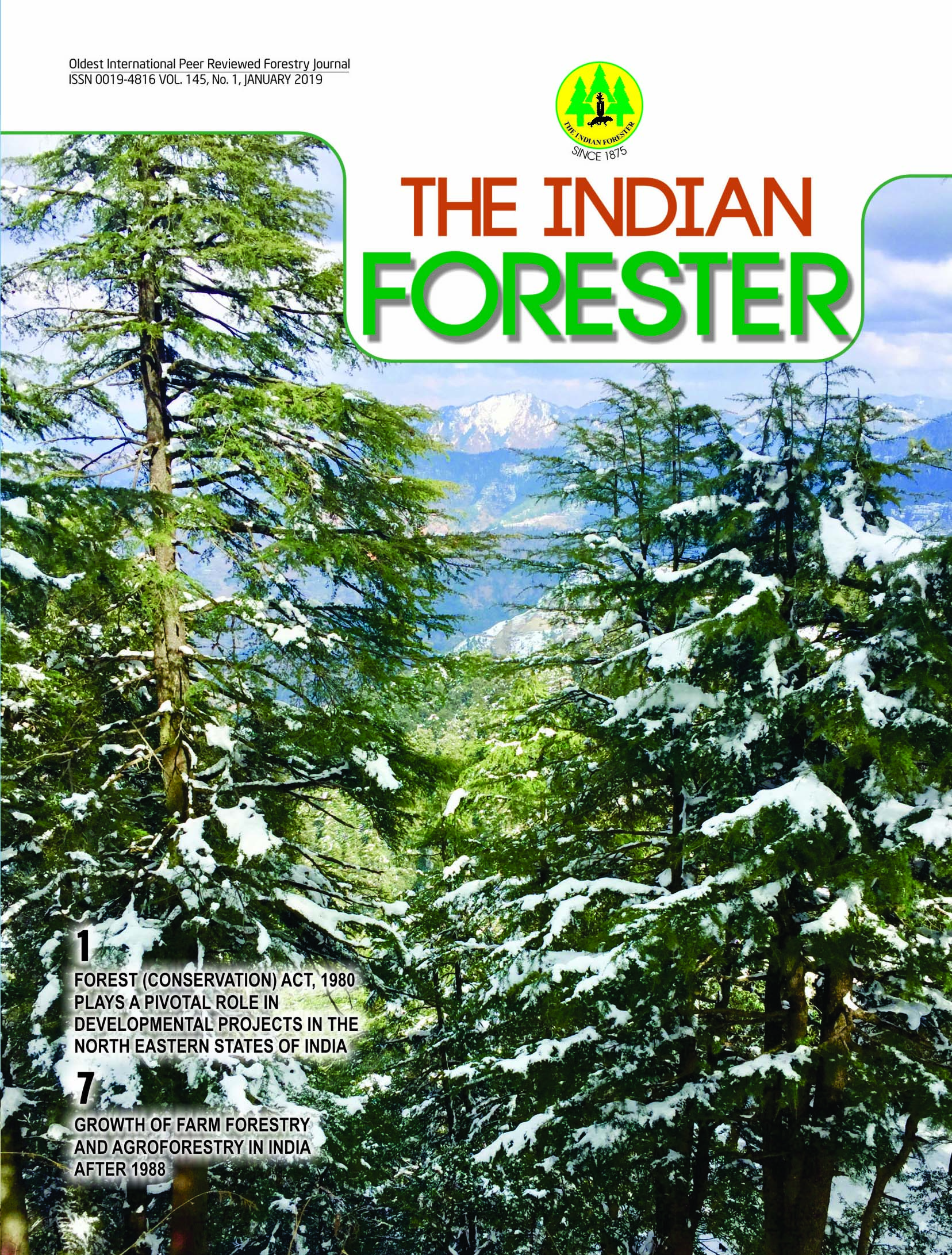Biomass Production of High Density Leucaena leucocephala Plantation under different levels of nutrients
DOI:
https://doi.org/10.36808/if/2019/v145i1/102831Keywords:
Biomass, Coppice shoots, Growth parameters, High density plantation, NutrientsAbstract
High density subabul (Leucaena leucocephala) plantations are being raised in Punjab for biomass based electricity generation. An experiment was conducted at PAU Ludhiana to standardize the nutrient requirement of high density (1 x 1 m) plantation of subabul for its high biomass production. Six combinations of nitrogen, phosphorus and potassium viz. 0:0:0 (control), 20:20:10, 40:40:20, 60:60:30, 80:80:40 and 100:100:50 kg/ha N:P2 O2 :K2 O were tested. The data on growth parameters (collar diameter, height and branch numbers), fresh and dry biomass of stems, branches, leaves and total biomass were recorded one year after planting and subsequently that of six month old coppice shoots. Collar diameter and plant height after one year growth were minimum (1.92 cm and 2.51 m, respectively) without application of nutrients while maximum (2.63 cm and 3.68 m, respectively) with the application of N:P2 O2 :K2 O 40:40:20 kg/ha. The total fresh biomass after one year growth and six month old coppice shoots was significantly higher by applying N:P2 O2 :K2 O 40:40:20 kg/ha (14.98 and 22.36 t/ha, respectively) than other nutrient levels. The stems, branches, leaves and total dry biomass after one year growth was the lowest (2.92, 0.86, 1.36 and 5.15 t/ha, respectively) without nutrient application and significantly highest with the application of N:P2 O2 :K2 O 40:40:20 kg/ha (3.75, 0.95, 1.79 and 6.49 t/ha, respectively). Fresh and dry biomass of six month old coppice shoots was higher than the biomass of previous one year. Thus, it is advisable to apply nutrients 40:40:20 kg/ha N:P2 O2 :K2 O every year to obtain maximum production of high density subabul plantation.References
Jackson M.L. (1973). Soil chemical analysis. Prentice Hall of India Pvt Ltd, New Delhi.
Koul V.K., Bhardwaj S.D. and Kaushal A.N. (1995). Effect of N and P application on nutrient uptake and biomass production in Bauhinia variegata Linn. seedlings. Indian Forester, 121: 14-22.
Kumari T.K., Sreenivasulu A., Meru E. and Rao P.S. (2002). Response of chemical fertilizers on Eucalyptus tereticornis clones. Indian Forester, 128: 502-508.
Mehta P., Rana B.S. and Verma S.K. (2012). Effect of nitrogen and phosphorus fertilizers on seedling growth and biomass of teak (Tectona grandis Linn. F.) on sodic soil.Indian Forester, 138: 624-627.
Nadagouda V.B., Patil C.V., Desai B.K. and Manjappa K. (1997). Growth and yield of seven tree species under high density planting and irrigation. Indian Forester, 123: 61-65.
Panse V.G. and Sukhatme P.V. (1985). Statistical methods for agricultural workers (4th edition). ICAR, New Delhi.
Singh B. (2001). Influence of fertilization and spacing on growth and nutrient uptake in poplar (Populus deltoides) nursery. Indian Forester, 127: 111-114.
Singh B.P., Ghosal S., Kumar P., Srivastava S.C. and Choudhary S.G. (2001). Effect of fertilizer levels on plant growth and biomass production in Acacia auriculiformis. Indian J. Forestry, 24: 38-42.
Singh S.B., Kumar P. and Prasad K.G. (1991). Effectiveness of different nitrogen sources on Leucaena leucocephala. Indian Forester, 117: 207-212.
Srivastava B.P. (1981). High density short rotation forestry for mitigating the energy crisis in India. Indian Forester, 107: 767-776.
Downloads
Downloads
Published
How to Cite
Issue
Section
License
Unless otherwise stated, copyright or similar rights in all materials presented on the site, including graphical images, are owned by Indian Forester.





